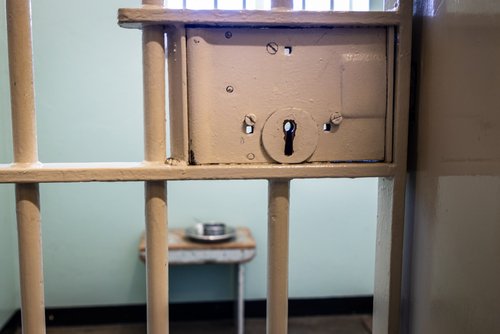In 1993 there were about 22,000 inmates on New York City’s Riker’s Island. The island was bursting at the seams. Literally. They had to bring in prison barges to handle the population. As crime went down, the Rikers population also went down. By 2015 there were less than 10,000 inmates on the island. Great progress had been made to keep crime down and keep people out of jail. This was not good enough for some of our lawmakers. The inept DeBlasio Administration spent 8 years working on closing the antiquated Riker’s Island. Their vision was to reduce the number of inmates that NYC could accommodate to below 5,000 and hopefully down to 3,300. Not surprisingly the regime achieved the regime’s production numbers, and had gotten to total number of prisoners in the system to below 4,500 last year. You can tell, crime is up over 28 percent this year in New York City. In California, federal judges have ordered the release of vast swaths of the prison population. In recent days the Pennsylvania Lt. Governor and current Senate candidate John Fetterman has agreed that the state prison population should be reduced by one-third. Similar decarceration movements are in the works around the country.
Having less than 5,000 inmates is a noble goal for NYC. It is a worthy challenge for states like California and Pennsylvania to see fewer of its citizens in prison. It should be an objective, not a mandate. Progressives do not understand decarceration. Decarceration is a societal objective, not a crime reduction policy. In a city of 8 million people wouldn’t it be great to only have 5,000 people who were not a danger to other citizens. If we worked together and crime continued to go down, if we were able to stop individuals from committing crimes with good policy and societal pushes, if we were able to get a handle on recidivism, then we could celebrate the lack of a jail population. To announce that no matter what happens now or in the future New York City will only be able to house 5,000 prisoners has the potential for societal suicide.
Progressives regularly deny the effectiveness of policing. They do not, however, provide any good data on what does reduce crime. They say it’s a variety of factors, a lack of vague welfare practices, underserving a particular community, or racism. If you can’t identify what causes crime, how can you claim that you can operate the largest city in the nation with a jail population smaller that the passenger capacity of a Staten Island Ferry. This salient point does not deter their ideology. They claim, based on a few very shaky, partisan studies, that decarceration reduces crime. They have decided on an arbitrary number, and we will have to deal with the consequences.
We would be much better served to do the hard work necessary to reach a reasonable goal. Develop small scale innovative programs to reduce recidivism. See what initiatives work using hard statistics. Grow success stories and scrap failures. Spend more money on each prisoner to improve their job outlook if that shows positive results. Create a better legal system for ordered mental health care. Ask that all government agencies be stakeholders in this endeavor. It is not just the responsibility of the police to correct deep seated societal problems.
As a society we should all strive to keep people out of jail. It is a challenge worthy of our great American society. It takes work, innovation, and analysis. It is not a simple fix that can be accomplished safely with the stroke of a politician’s pen. To think otherwise is a fatuous and ignorant stance that will only lead to violence and pain.











